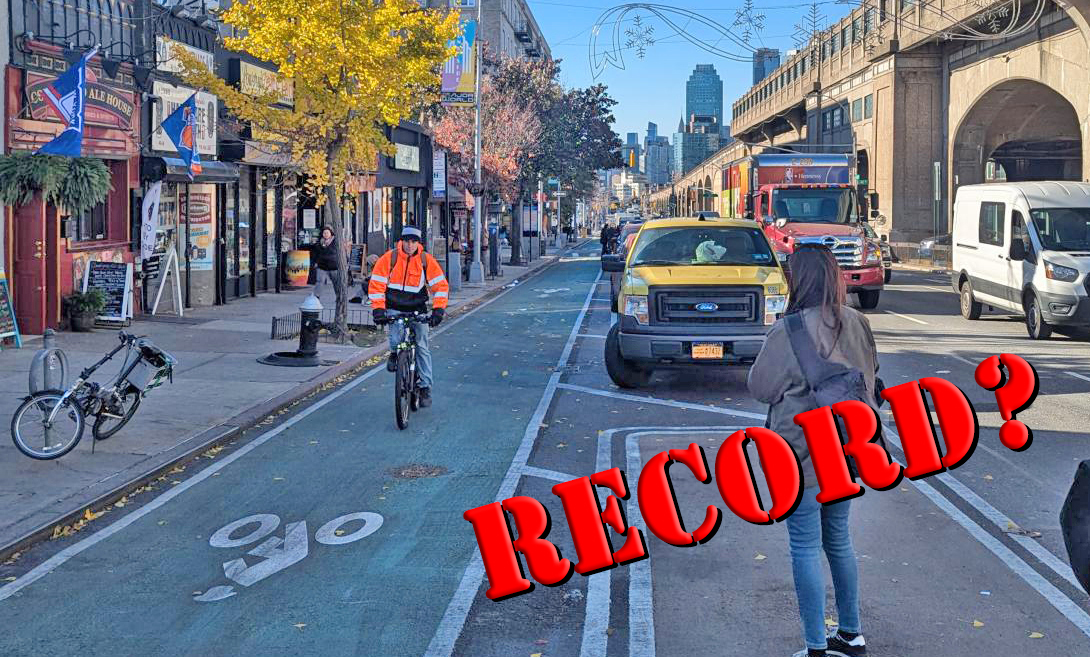
Even the sprightliest city pedestrian sometimes has to hustle across the street to beat a short walk signal. In a new report, Transportation Alternatives examines what it's like for New York's elderly to face flashing lights, wide crossings and unyielding motorists.
From Karla Quintero, Deputy Director of Planning for TA:
There are currently over one million senior citizens living in New York City. While they represent only about 13 percent of the population, they account for 33 percent of pedestrian injuries and fatalities. Discriminatory by Design (pdf), a report released today by Transportation Alternatives, finds that street design, and in particular the width of a street, is a major contributing factor in negatively influencing pedestrian and driver behavior.
The study focused on the Upper East Side, an area with a high concentration of elderly residents as well as wide cross-town streets that are crossed by thousands of pedestrians and vehicles each day. Within this neighborhood, Transportation Alternatives and Rachel Krug, a doctoral student at the Mailman School of Public Health at Columbia University, observed vehicles and pedestrians at 18 locations, 6 wide crossings and 12 narrow crossings (30 feet).
The team found that senior citizens begin to show signs of distress and engage in dangerous crossing behavior -- such as speeding up their walking pace, walking unsteadily, standing in the street before beginning to cross and crossing before the signal has changed -- at wider crossings to compensate for the fact that they walk at slower speeds. Coupled with the fact that 95 percent of vehicles observed during the study period did not yield to pedestrians, the study concludes that wider streets present unacceptable risks to elderly pedestrians. These risks have an overwhelming impact on the well-being and quality of life of senior citizens.
To reduce these risks, Transportation Alternatives recommends that the city re-time pedestrian signals to accommodate senior average walking speeds of 3 feet per second (currently the signals are timed for speeds of 4 feet per second) and implement measures such as leading pedestrian intervals and curb extensions that would protect senior citizens from turning vehicles. The study also calls for a public awareness campaign to educate drivers and the public as to what it is like to be a senior pedestrian.
This seems like an ideal cause for the Daily News, concerned as they are with the ages of cyclists hit and killed by drivers.
Photo: Transportation Alternatives





